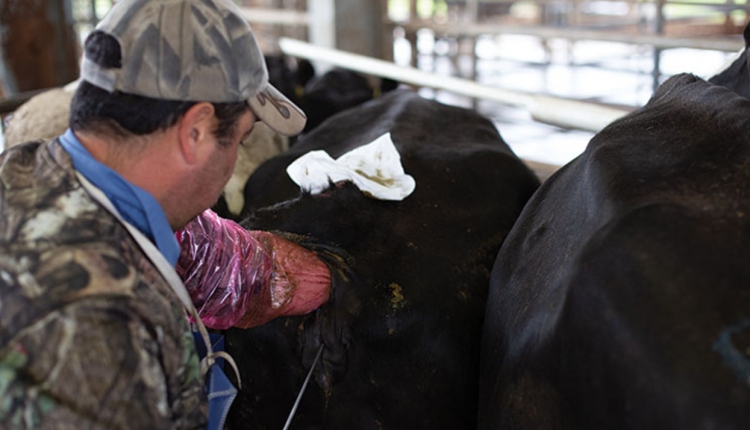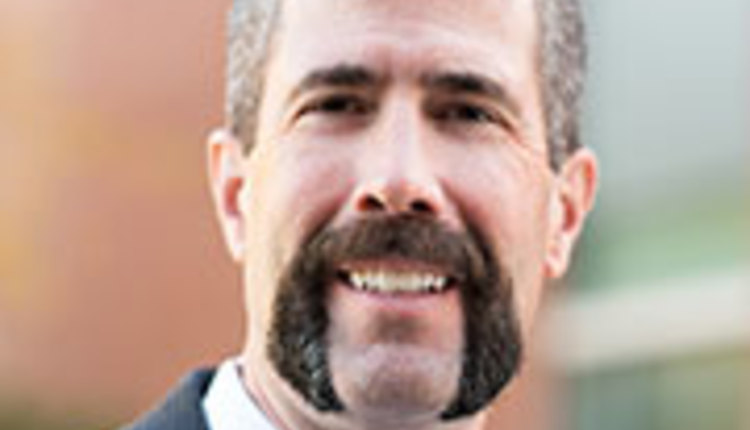ThIs year’s 11th annual Dairy Cattle Reproduction Council (DCRC) award winners prove that constant improvement is a must. On each of these dairy farms, a million little things have to go right for everything to operate smoothly, but it only takes one step to go wrong to set things back. To keep their reproductive performance in harmony, these farmers strive for good compliance to protocols, maintain solid records, and, above all, work with employee and consultant teams to keep the lines of communication flowing to achieve a positive outcome.
In this first round table of the season, the six Platinum winning herds in the DCRC awards competition share their insight on reproduction. These herds sorted themselves to the top from 102 nominated herds — the second highest to date. Those entries hailed from 15 U.S. states and seven countries found on four continents.
In the final phase of judging, a combination of statistical analysis and thorough record inspection helped the judging panel evaluate the 40 semifinalists and eventually select the top 24 herds. Throughout the entire process, judges only viewed each farm’s data and did not actually learn of herd or nominator names until the final tabulations were completed by the awards committee chair. Following the judging process, a Hoard’s Dairyman editorial team member assisted DCRC by personally visiting each of the Platinum-winning herds during a one-week window.

How do you set up fresh cows for future reproductive success?
Holmesville Dairy: Once our cows calve, we provide a liquid drench as soon as possible and always within 24 hours postcalving. Our drench contains calcium and 12 ounces of propylene glycol mixed with 5 gallons of lukewarm water. We also give each cow vitamin B12 and oxytocin to help prevent retained placentas. We also monitor fresh cows daily for feed intake.
If we have a cow that has a retained placenta after 12 hours, we administer Excenel for metritis by working with our veterinarian. Cows are vaccinated two weeks after calving with Bovi-Shield Gold 5 L5 HB for reproductive disease.
Cows that are carrying twins based on ultrasound examination are dried off earlier to try and achieve a longer, 70-day dry cow period to better maintain their body condition.
Pendora Dairy: Cows that have recently calved are kept in a group with extra bunk space. These cows are checked daily for temperature and blood beta-hydroxybutyrate acid (BHBA) levels. Cows are treated accordingly to minimize subclinical ketosis.
Cows are ultrasounded starting at 24 days in milk (DIM). Cows with uterine or ovarian pathologies are treated and rechecked at 14-day intervals until normal.
Rollin’ Green Dairy: The smoother a transition period, the better cows will breed back. We try our best to never overcrowd the prefresh or fresh group. Every cow gets an Inforce 3 vaccination, and 3-year-olds or older also get fast and long-acting calcium boluses at calving. There has been a significant improvement in fresh cow health overall since implementing the Inforce protocol.
We also blood sample every cow at 6 DIM to check blood ketone levels and make sure there is no subclinical ketosis that may hold her back. We have found that if there are higher BHBA levels at calving, it is an early indicator of illness or metabolic problems soon to come.
We utilize the milk temperature feature on our milking units to catch a fever in our cows sooner than we would have by just observing for illness. We utilize a strong vaccination schedule staggered throughout different times of the year based on when we are already handling the cow.
We will not keep a cow for a long dry period anymore. It has to be an awfully exceptional cow to stand dry for more than 80 days. We also cull harder than in the past when they aren’t bred back in a timely manner. By not allowing cows to get overconditioned in the dry pen, there is definitely a smoother transition into lactation. Fat cows are an accident waiting to happen.
We walk all cows three times a day observing for cud chewing, illness, and overall behavior. We also use an anionic product and low-potassium grass hay in the prefresh diet to make the transition as smooth as possible.
We also avoid using sires with high calving ease evaluations and try to reduce the incidence of twinning in the herd by breeding cows at a time of higher blood progesterone levels (after the first double ovsynch). Cows giving birth to twins are always a problem.
Schilling Farms: For the first 20 days after calving, fresh cows are monitored at the headlock stalls each morning. Temperature, attitude, and appetite are closely watched for signs of illness. Early detection and treatment is key in preventing serious fresh cow disease and uterine infections that ultimately influence conception rates.
All fresh cows are given a drench mix that includes calcium propionate, alfalfa meal, and probiotics. Cows also are checked between five and 11 DIM for BHBA with a PortaCheck BHB meter. Follow-up treatment for ketosis takes place based on these tests.
Prostaglandin (Lutalyse) is given at 10 and 21 DIM to help with uterine involution. Cows are vaccinated with Bovi-Shield Gold 5 L5 HB on Day 21 postcalving to maximize immunity for reproductive-related diseases prior to breeding.
Nonestrified fatty acids (NEFAs) are periodically monitored in the prefresh group to assess body condition loss before calving. If NEFAs are high, rations are checked and adjusted.
Dry matter intakes (DMI) are monitored on a daily basis with the FeedWatch feed monitoring program to make sure that we are maximizing our feed intakes in both the prefresh and postfresh groups.
Seidl Mountainview: All fresh cows are offered warm water after calving. All animals entering the second lactation also receive a calcium bolus at calving. Cows going into the third or greater lactation receive intravenous (IV) calcium and a calcium bolus at calving.
The postfresh group is milked four times a day. That group is locked up after 4 a.m. and then evaluated for intake and rumen fill. All fresh cows receive a calcium bolus and vitamin probios bolus on the second day postcalving. The fresh cow diet has dry dextrose to help intakes. We do daily temperature checks, and glycol plus a calcium bolus are given as needed. Fresh animals stay in this pen about three weeks before moving.
Victory Farms: Milking fresh cows four times a day improved DMI. We have found that this also helps with uterine contraction. Early DMI also has an impact on maintaining body condition. We have balanced fresh cow rations to bolster energy levels, optimize electrolyte balancing, and use on-farm forages as much as possible. We have focused on enhanced digestibility and improved nutrient absorption in our forages and diets in general.

What changes have you made to your facilities to benefit reproduction?
Holmesville: We have made several improvements. We have headlocks in all of our freestall pens along with prefresh and postfresh barns and for all of our heifers starting at 12 weeks of age. For heat abatement, we have added misters in the freestall barns along with lots of fans to keep the cows cool.
For animals that eat outside, we added a shade cloth over the bunks. We also added fans for our dry cows and prefresh cows. This summer, we removed the last of our mattresses, made our freestalls bigger, and went to 100 percent sand bedding.
Pendora: In 2017, we moved cows into the new deep-bedded (bedding master composted manure), tunnel-ventilated, 360-stall barn. That allowed us to make a fresh cow group in the main barn. We doubled the size (to two pens) where close-up dry cows stay for about two weeks until calving, only adding cows once a week, and alternating pens. There is also more room for our far-off dry cows. These changes alleviated overcrowding.
These changes have paid off for us in less dry cow influenced problems (retained placentas and ketosis) and better fresh cow startups. Not being overcrowded in the milk cows made for more natural cow behavior and greater lying times, which contribute to overall better cow comfort and cow health.
We also went to Wi-Fi “AfiAct II” heat detection to more accurately detect heats and lying times. Still on the wish list is AfiLab and rumination, and to run Dairy Comp 305 alongside AfiAct II on the farm.
Rollin’ Green: We built our barn in 2011, and it has made massive improvements in overall cow comfort, health, and heat abatement. Production went up and health costs fell. Sand bedding helps with traction for observing heats. We also roughen the concrete surface every other year with scarifier machines. You can tell when the concrete is slick as there are fewer heats observed.
Conception rates slip a few points in July and August but not anywhere near as bad as in the past. We have noticed in recent years that higher pregnancy rates and lower days in milk helps the cows’ production recover quicker in times of stress. Severe heat stress might slip production for a few days, but with the lactation persistency from being earlier in lactation, the cows seem to bounce back sooner.
In the future, we are considering more fans over the feed alley and maybe sprinklers. For the heifers, we improved our handling of them by installing self-locks instead of a chute.
The heifers have always been on a gravel lot, but that will change this fall when we move the breeding age heifers into a new bed-pack barn with room for multiple groups. The goal is to be able to vet check and confirm pregnancies as well as improve growth rates and provide better overall care.
Schilling: We feel cow cooling is critical to maintain conception rates during the summer. Changes we have made the last several years to improve cow cooling include adding three rows of fans per pen over each row of freestalls, feed line water sprinklers, and additional water sprinklers in the holding area. A third well was added recently to help maintain water pressure demand for the sprinklers and waterers. In 2014, additional fans were added over the cross alleys.
Dry cow cooling also is stressed with fans over the freestalls. Shade cloth has been added for the dry cows’ outside feeding area to help keep them cool. We feel that the improved cooling of our dry cows has helped produce healthier follicles, which has led to higher first-service conception rates.
We feel the exceptional cow comfort from sand bedding with adequately sized freestalls has also been critical to minimize lameness and allow maximal heat expression.
Seidl: All cows are housed in sand-bedded freestalls with tunnel ventilation. We also regrooved our floors. All cows are wetted down in the parlor while being milked. We also expanded one of the barn’s freestalls to 50 inches wide for older cows to improve cow comfort.
Victory: Cross-ventilation and headlocks have been big enhancements. When the new barn was built in 2015, this improved cow comfort. We also put in baffles so the air goes down on the cows. We are considering putting in sprinklers in the holding pens next year.
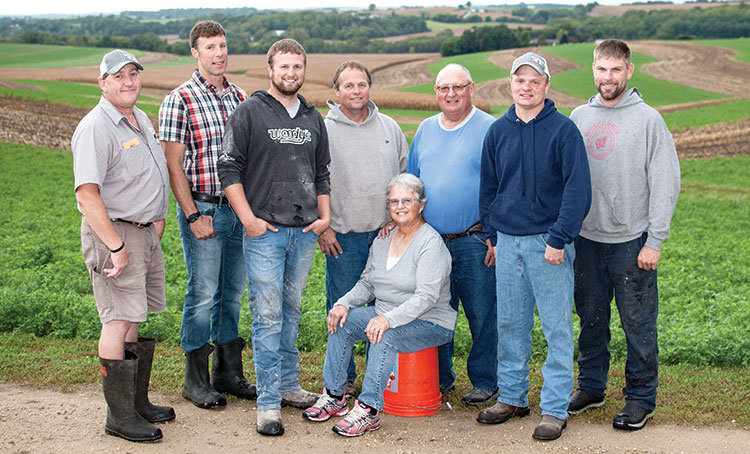
What is your voluntary waiting period?
Holmesville: After calving, all of our cows are bred at 88 days whether they are in the first lactation or producing high volumes of milk. We recently raised this waiting period by 10 days from 78 days to try and improve our peak milk. Heifers are bred at 13 months of age with sexed semen on the first two services.
Pendora: We have a 70-day voluntary waiting period (VWP) for the whole herd. We start breeding heifers at 13 months.
Rollin’ Green: Our voluntary waiting period is 77 days. A few years ago, we backed the voluntary waiting period back almost a full week (it had been 67 days). After moving it back, we haven’t waited longer than 77 days, even for high-peaking cows. Almost every cow is serviced before 90 DIM.
We never cherry-pick a cow before 77 days. They are more fertile after that point, and generally heats seen before then are from cows that have a better chance of settling if they would have followed through with the double ovsynch protocol. By waiting longer with the voluntary waiting period, and following through with the double ovsynch protocol, we have consistently averaged almost a 60 percent double ovsynch conception rate.
When it comes to heifers, they are moved into our A.I. breeding pen based on age and size at around 13 to 14 months. Once in the breeding pen, they are given prostaglandin and an Estrotect sticker is applied. If there is no heat observed, they are then given prostaglandin 14 days later and observed for heat. Within that month time frame, 98 percent of the heifers have seen at least one A.I. service.
Due to facility constraints and the pasture system, after a month in the breeding pen our heifers are put with the bull in the pregnant heifer pen. They are never confirmed pregnant until freshening.
Schilling: Most cows are bred for the first time with the ovsynch protocol between 87 and 93 DIM. We have seen positive results in our conception rates and peak milk by backing off our VWP from 60 to 87 days postcalving.
With improving first-service conception rates, we have slowly raised our VWP over the years with favorable results in both conception rates and improved peak milk. Most recently, we raised our VWP by another seven days. We also did this to move our hoof trimming prior to breeding, whereas before, cows were getting trimmed four days after the first ovsynch. Virgin heifers are bred starting at 13 months of age.
Seidl: All cows are enrolled in presynch program. Cows in standing heat at 60 days or more postcalving are bred.
Heifers are custom raised in Kansas. At that facility, heifers are moved to the A.I. pen at 13 months of age. Current breeding protocols are: top heifers get serviced to high-ranking lifetime Net Merit (NM$) bulls from sexed semen for two services. All the rest get bred to Angus.
Victory: We have a 65-day voluntary waiting period for all cows. Virgin heifers are bred starting at 11 months old.
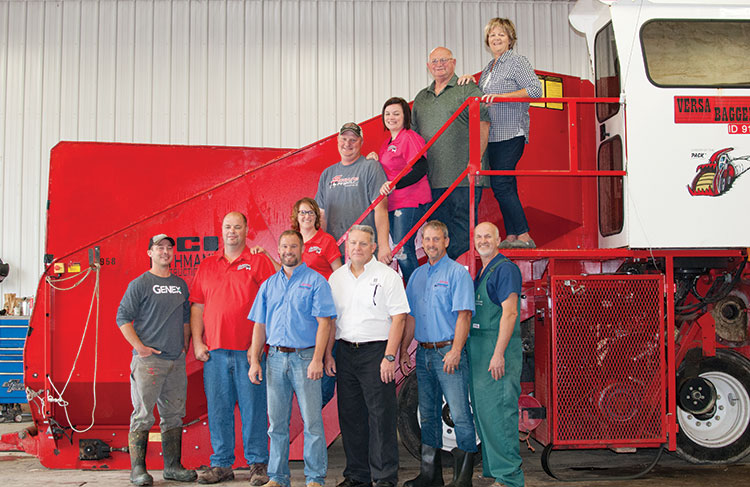
Do you use sexed semen?
Holmesville: For our heifers, we will use 90 percent sexed semen for the first and second services and then use beef semen after that. Conception rate for sexed semen is 52 percent and 62 percent for conventional semen. We have not been using sexed semen in the cows but have started to implement beef semen after the first two services.
Pendora: We use conventional semen in our cows. The majority of our heifers get bred to sexed semen for first service. We will use nonsexed semen if it’s a higher-indexed bull that does not have sexed semen available yet. All second breedings are with conventional semen for heifers.
Our heifer A.I. philosophy goes this way . . . we try to have bulls for heifers in both sexed and conventional. We breed with sexed semen just once because a pregnancy is more important than that “guaranteed” heifer calf. We sell excess heifers for dairy at prebreeding or as fresh heifers. All calves are genomic tested.
Rollin’ Green: We haven’t used sexed semen at all for the last seven years. We stopped once we got our freestall barn full from growing within. We finish out our steers and see value in both Holstein bull calves and beef-cross calves for our feedlot.
It is not worth it for us to spend more in semen costs and sacrifice some in conception rate. We are having a hard time managing overcrowding with young stock as it is.
Schilling: We use 90 percent sexed female semen on virgin heifers for the first two services. For services third and greater, conventional semen is used, and if they do not settle, they will be marked do not breed. In our lactating cows, sexed semen is used on first-lactation cows for the first two services. Beef semen is also now used based on both age of the cow and its Net Merit ranking in the herd.
Conception rate of sexed semen in the heifers is 57 percent, and conventional semen is 61 percent. Conception rate of sexed semen in 2-year-olds is 47 percent, and conventional semen is 62 percent
We have continued to use sexed semen as we feel that our 2-year-olds calve in with fewer difficulties due to the smaller size of the heifer calves. We also have marketed excess heifers as an additional source of income for the dairy.
Also, to reduce the total number of heifers being born, and to improve the marketability of the calves, we have started using beef sires. Beef is bred on all third-lactation and greater cows and also on a limited basis in heifers for fourth services.
Seidl: Sexed semen is used on top-end heifers for two services; all the rest receive Angus semen. We have seen no difference in conception rates using sexed semen. In the milking herd, top-ranking cows receive some sexed and some regular semen, while the bottom end gets Angus semen.
We are moving the herd toward a goal of the top cows in the herd getting sexed semen and using Angus for the rest. The result is breeding better herd replacements and controlling heifer inventory, because at current levels, getting a lot of animals pregnant results in a lot more calvings per month.
Victory: We use sexed semen on both cows and heifers. We have cows broken into four categories: high, high-middle, low-middle, and low groups. These rankings are determined by parent average or genomic tests. All cows coded in the low group get serviced to beef semen. All cows coded high-middle or low-middle get either an embryo or sexed Holstein semen once, and beef follows the next time.
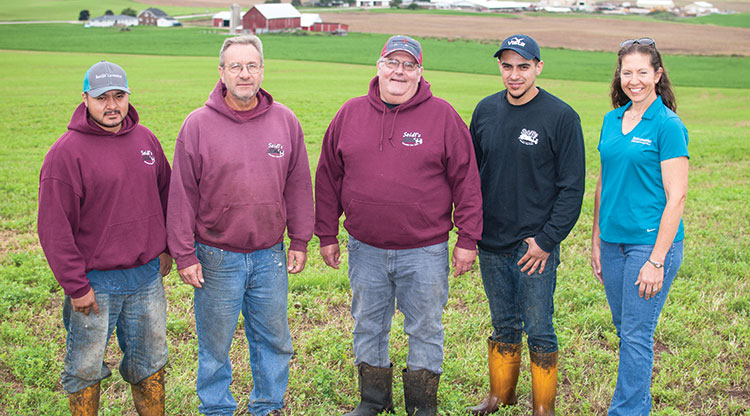
How do you confirm pregnant or open status?
Holmesville: For pregnancy checking, we have our veterinarian, B.J. Jones, ultrasound them once a week on Tuesdays. We ultrasound cows at 32 days after breeding to determine if they are pregnant or open. Pregnant cows are rechecked at Day 55 to confirm the pregnancy and also to check for twins and the fetal sex. The heifer groups are also checked weekly at the same intervals.
Pendora: All cows are ultrasounded at 14-day intervals when they meet specified criteria. Preg checks are done starting at Day 24. All first-time pregnant cows are rechecked 14 days later and again when greater than 70 days carried calf (DCC).
Rollin’ Green: We have vet check with ultrasound every two weeks. Postbreeding checks are done around 70 DIM, after the first round of ovsynch and when ready to start the second. The cows are flagged to be checked for the first time at 27 days postbreeding, but most cows are checked at 32 days postbreeding.
Open cows on vet check day are usually resynched with ovsynch. Any cow with three or more breedings is CIDR synched. Cows that are close to a heat are just painted and observed for heat. We ultrasound every cow at 32, 45, and 100 days pregnant.
Schilling: Cows are ultrasounded at 33 DCC to determine pregnancy. Open cows with a CL are resynched with ovsynch using 4 cc of GnRH and then a double prostaglandin 24 hours apart.
Open cows without a CL are given 4 cc GnRH and rechecked the following week for a CL. Pregnant cows are ultrasounded at 60 DCC to confirm pregnancy, determine fetal sex, and to check for twins.
Seidl: Cows are checked at 30 days and again at 60 days postbreeding. At 150 days, all cows are re-evaluated via ultrasound by the veterinarian at herd check. Herd check is weekly every Monday.
Victory: We use ultrasound to pregnancy check cows between 32 to 38 days postbreeding. At 80 days, cows are reconfirmed using palpation and confirmed once again at 180 days. At dry-off, all cows are checked again.
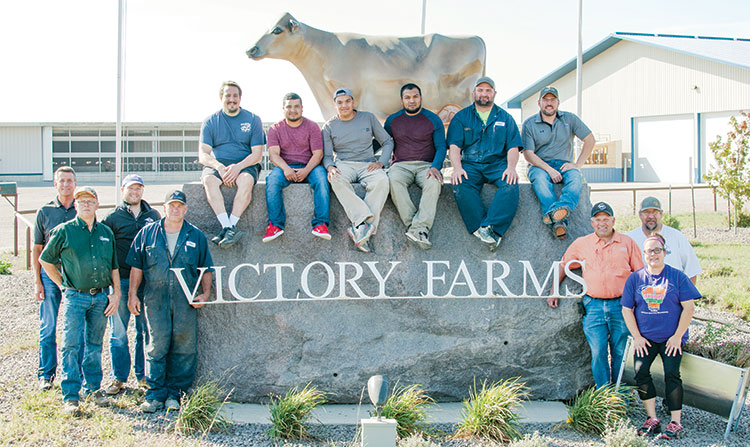
How do you deal with problem cows?
Holmesville: If a cow is having trouble getting pregnant, we use the ovsynch programs. Once cows are over 200 days in milk or under 75 pounds of milk and open, we do not breed them.
Pendora: At herd health checks, cows that are noncycling get GnRH two days in a row. Meanwhile, cows diagnosed cystic at herd health check have the cyst popped or drained. After 240 DIM, a cow becomes a “no breed” cow . . . that also holds true after five services.
Rollin’ Green: After three services, a cow is considered a problem cow. She will then be flagged for vet check to be sure she is cycling normally, and if confirmed open, she will be enrolled in CIDR synch. Depending on the cow, usually by the third breeding, we use beef semen, sometimes even sooner.
Since breeding has improved in the last few years, to be blunt, I give up on problem cows sooner. Due to more aggressive heat detection, it isn’t hard to have four to five services in a cow by 170 to 180 DIM. Do not breed decisions are handled on a case-by-case basis, but it takes a superior cow to keep breeding until my absolute cutoff of 220 DIM and 80 to 90 pounds of milk per day.
Schilling: We try to identify problem cows early and stop breeding them. Cows are considered for a “do not breed” classification when they are open over 180 DIM and have lower milk production. When a do not breed (DNB) cow’s milk production falls below 80 pounds per day of milk, she is considered for culling. Cows may be classified DNB earlier in lactation based on age, production, or feet and leg concerns.
Seidl: After being called open, problem breeders go on ovsynch and are given a double prostaglandin shot and double bred. Everything on our farm is bred 100 percent A.I. Cows go on the DNB list for low milk production, issues related to body condition, days open, age, and somatic cell count (SCC).
Victory: Any cow bred three or more times receives GnRH at breeding. At 180 DIM, cows are entered into the computer as DNB.
What metrics do you track?
Holmesville: We watch pregnancy rates on a regular basis. We also monitor weekly our palpation rates for pregnancy as that is usually our first indicator if breeding isn’t going well. We have quarterly team meetings where our consultant, Rod Wautlet, and our veterinarian, B.J. Jones, will thoroughly evaluate our conception rates in both heifers and cows.
Pendora: We look at these performance indicators after every herd health check after information is entered into Afi:
- Days to first breeding
- Services per conception
- Average days open
- Pregnancy rate
- Service sire conception rate on farm
- Rollin’ Green: For cows, we look at eight metrics:
- 21-day pregnancy risk
- Conception rate by breeding code
- Service rate
- Days in milk for the entire herd
- Conception rate by technician
- Services per conception
- Repeat interval analysis
- Culls for repro
In our heifers, we track conception rate and age at first calving.
Digging a little deeper, I (Jeffrey) look at 21-day pregnancy risk, conception rate by breeding code, and conception rate by technician after almost every herd check. I like to analyze in real time how each individual herd check is going and address issues as they may arise.
As far as the rest, they are more of a long-term analysis, and those numbers help us get the overall big picture of how reproduction is going. It was by observing these metrics that told me three years ago my A.I. technique needed work. I got retrained and had an entire repro audit done by Accelerated Genetics.
Schilling: These metrics are the same for cows and heifers. We also monitor sexed semen versus conventional semen conception rates weekly in the heifers.
- Pregnancy rate, monitored weekly
- Conception rates, by breeding code and technician, monitored weekly
- Abortion rate and early embryonic death rate, reviewed weekly after herd check
- Days in milk to first breeding, weekly
- Fresh cow starts, monitored monthly
- Feed intakes, dry matter intakes, and refusal weigh backs, watched daily
Seidl: We track these metrics: Pregnancy rate — at weekly herd checks and the overall rate for the month. We also look at breed summary reports, technician conception rates, and overall herd summary reports. In the heifer population, we track the number of heifers bred and confirmed pregnant.
Victory: We use preg rate, heat detection levels, conception rate, percent pregnant at 150 DIM, first-service conception, and percent DNB. We monitor all of these statistics weekly.
What insight would you share with others?
Holmesville: Engage all the resource people possible so you can maximize your herd fertility. We feel breeding is a result of a total team approach from the employees, nutritionists, veterinarian, and breeders. Quarterly team meetings have helped keep our group on the same page. Everyone needs to be a team player to have a successful breeding program.
Pendora: We have a sound dry cow program to minimize fresh cow problems. Try not to overcrowd your cows. Try to keep SCC in check. Also, use sires with high sire conception rate (SCR) and daughter pregnancy rate (DPR).
Rollin’ Green: We were struggling with reproduction a few short years ago. The majority of the problem was my A.I. technique, and I am now a firm believer in getting A.I. retrained every few years.
However, in the process of struggling through the problems we were having, we made substantial improvements to our program by seeking out advice. We rewrote the book on our farm for the protocols to get cows pregnant. The changes we made a few years ago as discussed earlier included: A.I. retraining, walk cows three times a day, watching 21-day interval cows, implement two prostaglandins with ovsynch, make sure every protocol is followed correctly, and raised our voluntary waiting period.
On our dairy, a million things have to go right for everything to go smooth, but it only takes one thing to go wrong to wreck it all. No matter what your protocols are, you must follow them as written. Make them part of your daily routine and be very organized.
As far as heat detection goes, we have had the most success narrowing in on the few cows that are supposed to be coming into heat. The more time spent in the barn walking and observing cows, the more heats are observed.
Schilling: We feel cow comfort, foot health, cooling, nutrition, and fresh cow care is essential for a successful reproductive program. All factors depend on each other for a successful breeding system. In addition, having set protocols and routines for synching and resynching has helped maintain excellent compliance essential to reproductive success.
Find breeding companies that you feel comfortable with and that will spend adequate time monitoring the cows for heat. We feel our Genex team is excellent and very good at heat detection. Ultrasound has also allowed us to more accurately manage our breeding program.
Seidl: Compliance is huge, and all reproductive therapy must be on time . . . always. All prostaglandin and GnRH on this dairy are given the same day at the same time all the time. All syringe guns are checked weekly for accuracy and if they are working properly. All cows on timed A.I. are bred within 16 hours of GnRH shot.
Time must be spent observing cows for heat. Reproduction starts in the dry period, the most important time for the cow. If they are well-cared for, everything else seems to fall in place.
Victory: You need to have good compliance, execution of all protocols, and a good team. That team includes employees and off-farm consultants. I always tell my consultants, “I don’t want to be average.”







